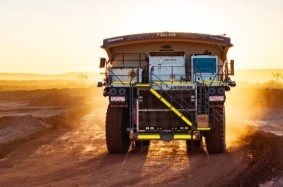Liebherr posted highest ever revenues in 2024


The Liebherr Group ended 2024 with a revenue of €14,622 million. Compared with the previous year, the company recorded a revenue growth of €580 million or 4.1 %. Liebherr is a German Swiss global equipment manufacturer based in Switzerland, with its main production facilities and origins in Germany.
In the 2024 business year, Liebherr recorded its highest ever revenue in the company’s history. At 4.1 %, the growth was less pronounced than the average growth of the past five business years. In seven of its 13 product segments, the Group achieved increases in sales. Trends differed between the various product segments and sales regions. The subdued demand in the construction industry, especially in Germany, weighed on some of Liebherr’s product segments. Nevertheless, the declines could be offset by the successful marketing of other products. Growth was primarily driven by mobile cranes and components for the aerospace product area, as well as healthy order books for mining and gear technology.
In the area of construction machines and mining, Liebherr grew by 3.5 %, achieving revenue of €9,891 million. This area incorporates the product segments of earthmoving, material handling technology, deep foundation machines, mining, mobile and crawler cranes, tower cranes and concrete technology. In the product segments of maritime cranes, aerospace and transportation systems, gear technology and automation systems, refrigerators and freezers, components, and hotels, Liebherr achieved total revenues of €4,731 million, an increase of 5.5 % compared with the previous year.
The Group achieved a net income of €258 million in 2024. Though the operating result continued to improve, the financial result fell below the level of the previous year. Furthermore, the number of employees grew once again in the 2024 business year. At the end of the year, Liebherr had a total of 54,728 employees worldwide, 1,069 more than in the previous year.
Liebherr is pursuing an objective to be a major player in the advancement of technological innovation. That is why the Group invested €666 million in research and development last year. The bulk of this went into the development of new products. Liebherr continued to develop existing technologies in the 2024 business year and added numerous new machines, components and solutions to its product programme. As in the previous year, the fields of alternative drive technology, digitalisation and autonomy were once again the focus of research and development.
Through its open approach to technology, Liebherr is helping its customers to hit their emissions targets. This is why the Group is developing, among other solutions, electric drives, alternative fuels for conventional combustion engines and hydrogen-based drives, such as hydrogen engines and hydrogen fuel cells. For instance, 2024 saw the unveiling of the first prototype of the L 566 H large wheel loader with a hydrogen combustion engine. Liebherr started series delivery of the LPO 100 mobile energy storage system and began work on developing the even more powerful LPO 600 prototype. The LTC 1050-3.1E hybrid crane was also launched, which can be operated on construction sites using battery power alone.
Liebherr and its customer Fortescue announced the historic extension of their partnership. Constituting the Group’s largest contract in company history, the delivery will comprise 475 zero-emission mining machines, of which 360 are models of the autonomous, battery-electric mining truck T 264. The partnership has set out to jointly develop an extensive zero-emission mining ecosystem by 2030.
In the field of autonomy and automation, the LiReCon teleoperation unit became ready for series production and, in the gear technology and automation systems product segment, Liebherr won an award for the automation solution for disassembly of battery packs. To ensure safety, efficiency and user experience in semi-autonomous or autonomous machines, Liebherr is researching different machine-based learning algorithms. Furthermore, Liebherr is presenting the ‘Liebherr Autonomous Operations’ system at Bauma 2025. The solution, which is at an advanced stage of development, facilitates completely driverless operation and is primarily suited to monotonous standard activities and operations in hazardous areas.
The Group further cemented its position as a provider of digital technology. A particular focus in this regard was on solutions such as Liebherr Connect to network machines, as well as on IT security solutions for products. Liebherr also recognises the importance of artificial intelligence (AI) to strengthen its competitive edge and to advance innovations, which is why the Group has established a dedicated competence centre.
More information about the company is posted at www.Liebherr.com.
Comments